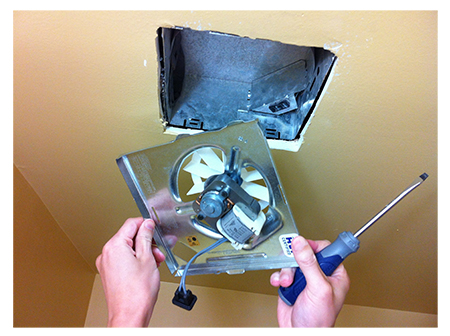The Nebraska Energy Office receives questions throughout the year from a wide range of people around the state. Here is just one sample of questions we get from Nebraskans. Our mission is to answer questions that will provide consumers with information to help them make an effective decision that's right for their situation.
You can email the Energy Advisor at energy@nebraska.gov.
A Contractor's Exhausting Dilemma
An electrical contractor asked, "I'm replacing a bath exhaust fan that must pass an energy audit inspection. What's the proper way to seal the opening after replacing the fan and motor?"
The Energy Advisor Says:
I always turn first to Section 303.2 of the International Energy Conservation Code (IECC), "Installation. All materials, systems and equipment shall be installed in accordance with the manufacturer's installation instructions and the International Building Code."
So, first check the installation instructions from the manufacturer. If those instructions don't address sealing the unit, you can visit the U.S. Department of Energy (DOE) website, which has instructions for this procedure.
Now, I noticed that you are an electrical contractor, so I'm guessing you know this, but I'm going to put it out there, just in case. For a number of small bathroom exhaust fans, you don't have to replace the housing when the fan motor burns out. 
Just buy a replacement panel. Simply remove the cover of the fan, unplug the motor/fan unit and pry it out. Surprisingly, most small models of bath fans all take the same replacement panel which you can pick up at any hardware store.
Back to the replacement. I've noticed in some cases contractors will use duct tape to seal a kitchen or bath fan. Don't use Duct Tape. Use any tape that is rated UL-181. It's easy to tell because it will have UL-181 printed on it. No, plain foil tape doesn't work. It's plain. If it's UL-181 rated, you will see UL-181 on the face of the foil tape. You can also use mastic.
Whatever you use for a sealant, it should be rated for high temperatures. An unvented attic can reach temperatures of 170 degrees Fahrenheit.
Hope that helps.
Sincerely,
The Energy Advisor